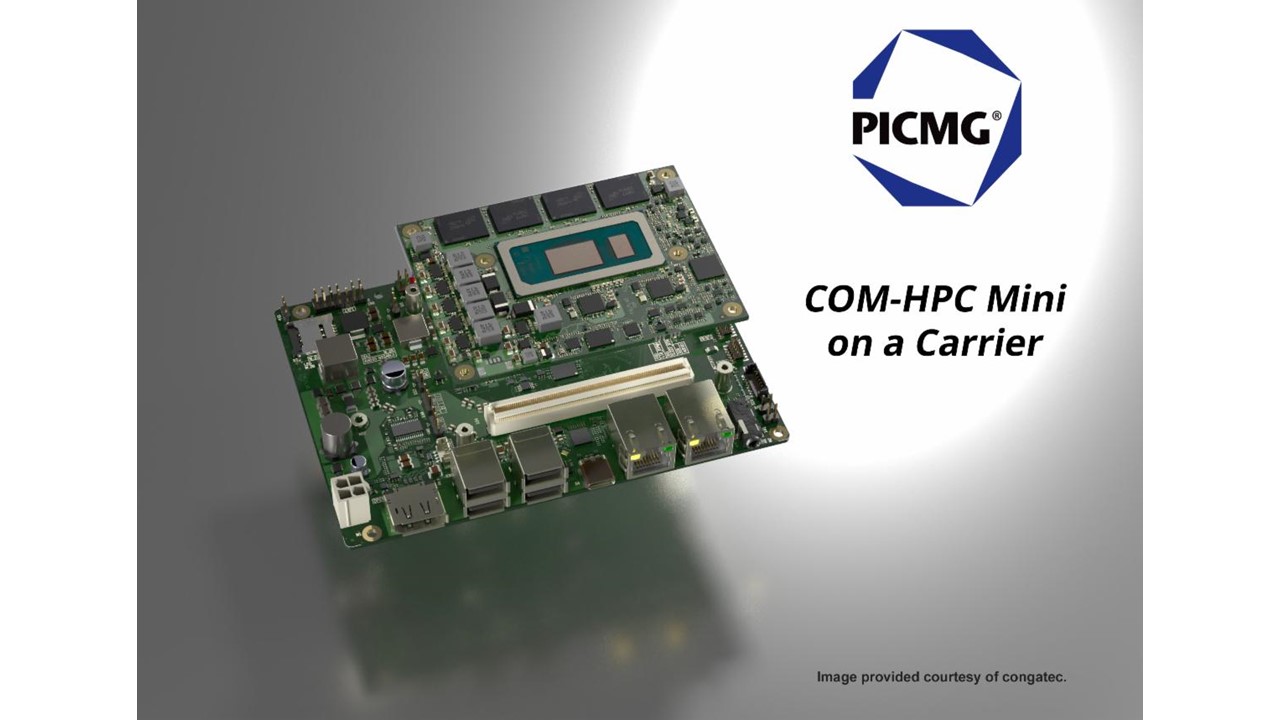PICMG®, a consortium for open hardware specifications, has released revision 2.2 of the COM-HPC® Carrier Design Guide. This comprehensive document contains interface schematics, diagrams, design rules and requirements, and more for PCB layout engineers and hardware developers looking to create application-specific carrier boards that pair with COM-HPC modules.
Revision 2.2 of the Design Guide includes updates to address the new COM-HPC 2.1 specification, nicknamed COM-HPC Mini, which is the 95 mm x 70 mm platform that uses one less connector compared to its fellow COM-HPC form factors, but still delivers 400 pins for carrying high-speed signals from the processor module to carrier boards.
“Designing a carrier board can be a complex and time-consuming process, but the COM-HPC Design Guide helps streamline that process” says Peter Hunold, head of hardware engineering at Kontron Europe GmbH and editor of the COM-HPC working group. “It serves as an excellent complement to the COM-HPC base specification, as well as, for revisions like COM-HPC 2.1 that introduced the new “Mini” form factor and vendor documentation.”
What’s New in COM-HPC Carrier Design Guide Revision 2.2
Revision 2.2 of the Carrier Board Design Guide primarily focuses on the COM-HPC Mini, a small form factor expansion of the COM-HPC standard first announced in 2022. This new guide clarifies the differences between COM-HPC Client and COM-HPC Mini carrier board requirements, with examples that illustrate modifications necessary to move from Client- to Mini-compatible designs.
The Design Guide 2.2 release also introduces information on the Intel®
JHL9040R USB4® Retimer, which replaces the JHL8040R in Rev 2.1. In addition to updated references, the document includes Intel JHL9040R block diagrams for both COM-HPC Client and COM-HPC Mini designs.
“Designing hardware to support new and emerging workloads is becoming progressively more challenging. Open standards such as COM-HPC help businesses overcome those challenges,” says Christian Eder, director of market intelligence at congatec. “They considerably reduce time-to-market for even the most sophisticated applications, especially with documentation to streamline the design process.”
The COM-HPC Carrier Design Guide revision 2.2 can be downloaded free of charge from PICMG’s website. For more information on the Design Guide, the COM-HPC standard, and other related specifications, visit:
- COM-HPC Design Guide Revision 2.2: www.picmg.org/wp-content/uploads/PICMG_COMHPC_CDG_R2_2.pdf
- COM-HPC Specification Documents: www.picmg.org/shop
- COM-HPC Overview: www.picmg.org/openstandards/com-hpc
- PICMG Design Guides: www.picmg.org/resources/design-guides
About PICMG
Founded in 1994, PICMG is a not-for-profit 501(c) consortium of companies and organizations that collaboratively develop open standards for high performance industrial, Industrial IoT, process control and automation, military & aerospace, telecommunications, test & measurement, medical, and general-purpose embedded computing applications. There are more than 150 member companies that specialize in a wide range of technical disciplines, including mechanical and thermal design, single board computer design, high-speed signaling design and analysis, networking expertise, backplane, and packaging design, power management, high availability software and comprehensive system management.
Key standards families developed by PICMG include COM-HPC, COM Express, CompactPCI, CompactPCI Serial, MicroTCA, AdvancedMC, AdvancedTCA, InterEdge, ModBlox7, HPM (Hardware Platform Management), MicroSAM, and SHB Express. For more information, visit www.picmg.org.










